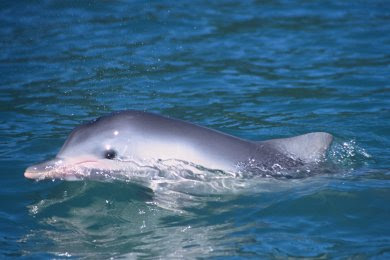We already know that parrotfish (Labridae: Scarini) are large (and beautiful!) fishes that play critical functional roles in reef environments when they feed, which in their case, we call “grazing”. Parrotfishes spend their day biting off bits and chunks of algae and other benthic organisms with their beak-like teeth. However, macroalgae may not be their preferred dish, they seem to like smaller diet items then what has been previously assumed. Because of this new finding, they have been recently reclassified as microphagous (“eaters of tiny particles”) (Clements et al., 2016), which by no means diminishes their importance in shaping the reef community. In other words, their nutrition comes from protein-rich autotrophic microorganisms, which in their turn are associated with macro organisms. By eating microorganisms, parrotfish affects the structure and composition of benthic communities by maintaining algae free corals.
Unfortunately, fishing pressure on parrotfishes has grown in the last decades around the world, and in Brazil, it is not different. Small-scale fisheries are exploiting large numbers of parrotfishes from Brazilian reefs, which could be leading to significant changes in the community structure. In particular, three species, Scarus trispinosus (Valenciennes, 1840), Sparisoma frondosum (Agassiz, 1831) and Sparisoma axillare (Steindachner, 1878), labeled as threatened in 2014, have been intensively targeted, mostly on the northeastern coast.
In the Brazilian northeast, fishermen use different gears, including gillnets, handlines and spearguns, depending on the parrotfish species targeted. The effects that gears have in a given fishing are important to be understood because they may change catch composition, catch per unit effort (CPUE) and fish size frequencies. Therefore, the understanding of the effects of gear may guide suitable management strategies to maintain fish populations and long-term fishing yields.
 |
| Scarus trispinosus landings. Photo by Natalia Roos. |
The paper “Multiple management strategies to control selectivity on parrotfishes harvesting” assesses gear size selectivity and fishing pressure on the three most caught species of parrotfishes in the Brazilian northeast. The results showed that the annual total catch of S. trispinosus was estimated in 9.4 tons, while S. frondosum and S. axillare (usually caught together) were estimated at 15.4 tons, totaling 24.8 tons of parrotfish fished per year in a tiny area of the Brazilian coast.
Both S. frondosum and S. axillare are being caught by gillnets and handline above the size of first maturity, however, the CPUE value for gillnets are much higher than handline. For S. trispinosus, which is caught with gillnets and spearguns, the scenario is worse. About 80% of all S. trispinosus caught were below the size of first maturity, and most of the immature individuals are coming from gillnet fishery.
Besides parrotfish artisanal fishing being multi-gear, multi-species and multi-strategy, there are many other problems involving this kind of fishery. First, parrotfishes are also targeted by unreported recreational fishing. Second, Sparisoma species are targeted by trap industrial fishing and exported to other countries. Third, some spearfishermen also hunt at night, when parrotfishes are asleep and much more vulnerable. Fourth, parrotfishes are protogynous hermaphrodite (i.e., they begin their life cycle as a female than they shift to male), and not protecting the larger individuals (males) can lead to several consequences to their reproduction.
Due to all of these reasons, a multiple strategy approach is suggested for parrotfish management. Besides controlling artisanal gears by establishing a slot size limit for handline and speargun (gears that fishermen can choose the size of fish) and increasing the gillnet mesh size, banning recreational fishing, night fishing and exportation of parrotfishes should be taken into account. It is also important to consider spatial planning to protect sensitive areas. Clearly, all of these measures have to be monitored to ensure good results.
The implementation of these multiple management strategies may oppose the latest Brazilian Red List, which recommended banning S. trispinosus fishery, as this was classified as Endangered, although it could support the need to manage S. axillare and S. frondosum. These two species are classified as Vulnerable and could be fished under restrictions. A repeal of the list would be a serious hindrance for the conservation and management of parrotfish. On the other hand, if this list is implemented, all the vulnerable species will require specific management measures, and this study is a timely contribution for the ecologically relevant and iconic groups of parrotfishes.
by Natalia Roos
References
Clements, K. D., German, D. P., Piché, J., Tribollet, A., & Choat, J. H. (2016). Integrating ecological roles and trophic diversification on coral reefs: multiple lines of evidence identify parrotfishes as microphages. Biological Journal of the Linnean Society.
Roos, NC, Pennino, MG, Lopes, PF, & Carvalho, AR. 2016. Multiple management strategies to control selectivity on parrotfishes harvesting. Ocean & Coastal Management, 134, 20-29.




